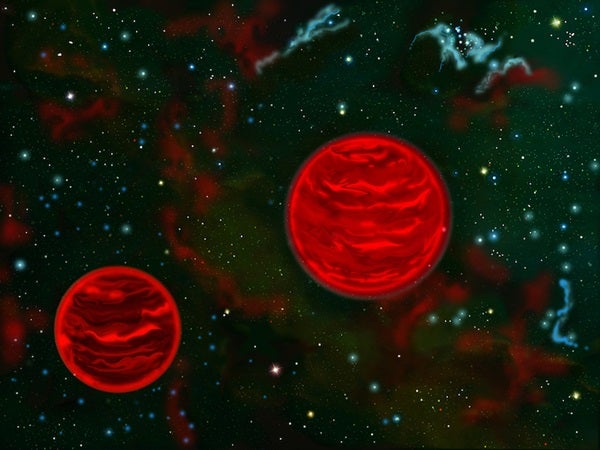2MASS J11193254–1137466 was announced last year as an untethered planetary-mass system in the TW Hydrae association, a grouping of stars with a center point about 95 light-years away. 1137466 is around 160 light-years away, but its motion indicates an 80 percent possibility that it’s part of this grouping of young stars. And a recent analysis suggests that it’s not one large planet but two slightly smaller gas giants, each about 10 million years old.
Both objects are around four Jupiter masses and seem gravitationally bound to each other as binary rogue planets with a separation about four times the distance between Earth and the Sun. If confirmed, it’s the first binary rogue planet pair ever discovered. Their mass places them firmly in the planetary range rather than brown dwarfs, which are “failed stars.” However, it’s possible that they formed like brown dwarfs, which accumulate mass like stars through the collapse of gas clouds but fail to ignite, fusing hydrogen into heavier isotopes rather than into helium, which is required to be classified as a star.
Both planets were likely ejected from a star in the association and took up their free-roaming ways. While their mother star may have spurned them, at least they have each other, and that counts for something.
SOURCE: AAS Nova
Want to learn more about the weird planets that populate the Milky Way? Download our FREE exoplanet e-book!










